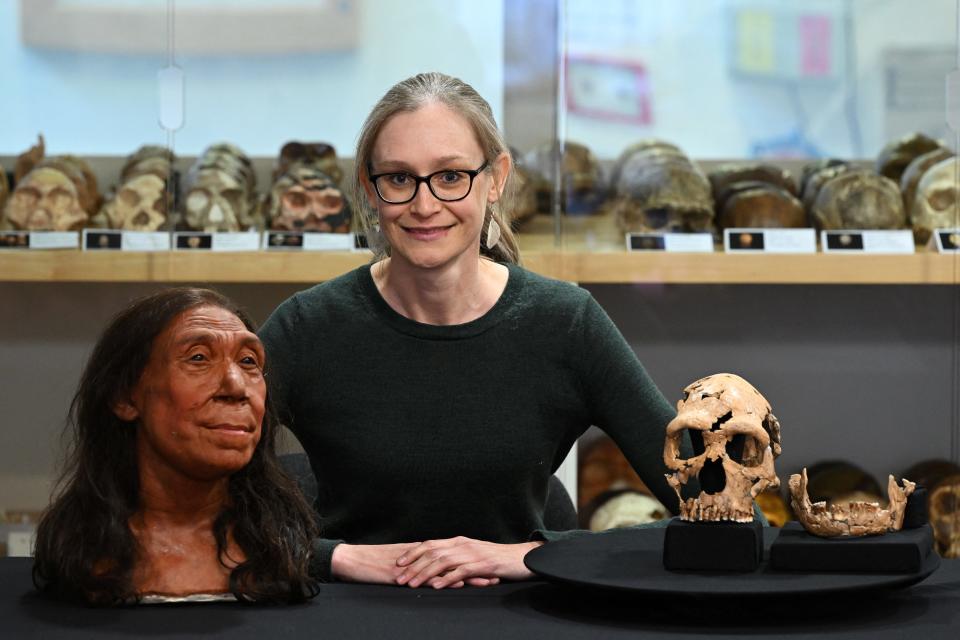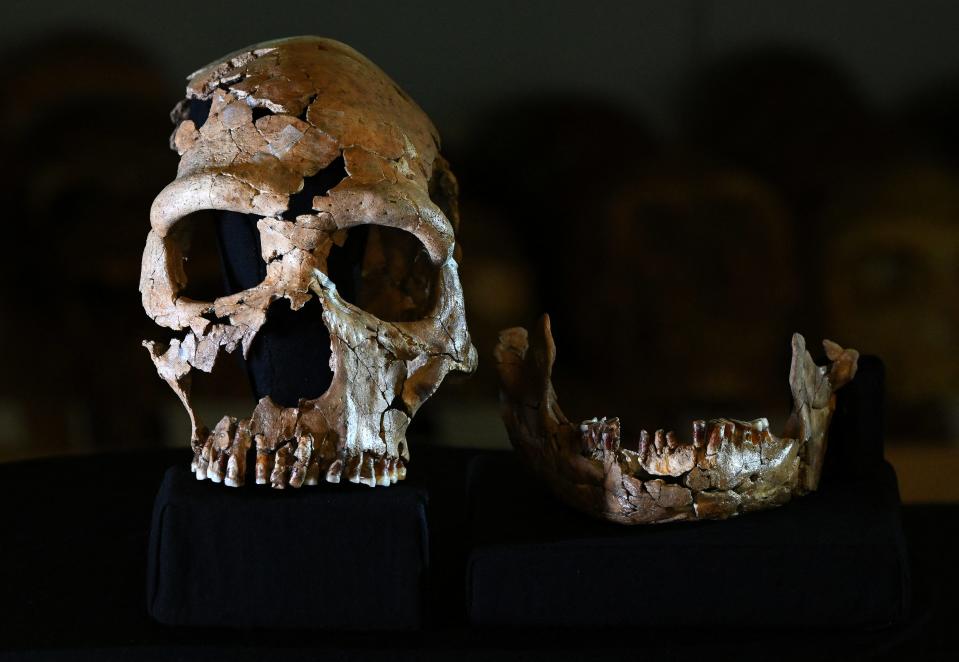Face of 75,000-year-old Neanderthal woman recreated after being dug up from Iraqi cave
The face of a 75,000-year-old Neanderthal woman has been recreated by a team of archeologists from the University of Cambridge after they excavated her body in 2018.
The rare discovery of the Neanderthal skull came from an Iraqi cave where the species was known to lay their dead to rest. The site could indicate how Neanderthals may have been more caring and emotionally intelligent than previously thought.
The team found the Neanderthal named Shanidar Z inside a cave in Iraqi Kurdistan, which is a mountainous region in northern Iraq. The Neanderthal species repeatedly returned to Iraqi Kurdistan to bury their dead, according to the University of Cambridge's findings.
The cave became famous because of several Neanderthals being unearthed there in the late 1950s after their bodies appeared to have been buried in succession, the school in Cambridge, England, said.
Neanderthals are believed to have died out more than 40,000 years ago, making discoveries of new remains "few and far between," according to Cambridge.

Shanidar Z's skull indicates possible interbreeding
Emma Pomeroy, a palaeo-anthropologist from Cambridge’s Department of Archaeology, says "The skulls of Neanderthals and humans look very different."
“Neanderthal skulls have huge brow ridges and lack chins, with a projecting midface that results in more prominent noses," Pomeroy said in the release. "But the recreated face suggests those differences were not so stark in life."
Neanderthal skulls differing from humans could indicate that interbreeding occurred between our species thousands of years ago, Pomeroy said. If true, then "almost everyone alive today still has Neanderthal DNA.”

Shanidar Z was a 5-foot woman in her mid-40s
Analysis of Shanidar's remains suggests she was a 5-foot woman who was possibly in her mid-40s, Cambridge said. The team determined her sex and age by observing her tooth enamel and physique, the school added.
"Some front teeth worn down to the root," according to Cambridge's findings.
How did the team of Cambridge archeologists excavate Shanidar Z?
The Cambridge team that found Shanidar Z's remains only found the top half of her body, and they believe the lower half was excavated in 1960.
Rockfall possibly crushed Shanidar Z's head relatively soon after her death, researchers surmise. The head was "then compacted further by tens of thousands of years of sediment," the school added.
"When archaeologists found it, the skull was flattened to around two centimeters thick," the Cambridge release said.
The team removed Shanidar Z in "dozens of small foil-wrapped blocks from under seven and a half meters of soil and rock within the heart of the cave," according to Cambridge.

How was Shanidar Z's face recreated?
In Cambridge's lab, researchers "took micro-CT scans of each block before gradually diluting the glue and using the scans to guide extraction of bone fragments," the school said.
Over 200 bits of Shanidar Z's skull were pieced together by lead conservator Lucía López-Polín to restore it to its original shape according to Cambridge.
“Each skull fragment is gently cleaned while glue and consolidant are re-added to stabilize the bone, which can be very soft, similar in consistency to a biscuit dunked in tea,” Pomeroy said. “It’s like a high stakes 3D jigsaw puzzle. A single block can take over a fortnight to process.”
Once rebuilt, the Shanidar's skull was surface scanned and 3D printed, which formed "the basis of a reconstructed head" created by paleoartists Adrie and Alfons Kennis, Cambridge said. The identical twins built up layers of fabricated muscle and skin to reveal a face, according to the school.
'Neanderthals have had a bad press'
While inside the cave where Shanidar was excavated, the team noticed a "huge vertical rock" that they believe served as a landmark for Neanderthals to identify a certain site for repeated burials, the school said.
Graeme Barker, a Cambridge professor who led to the cave excavation, said "Neanderthals have had a bad press ever since the first ones were found over 150 years ago."
The way the remains in the cave "show signs of an empathetic species" as Shanidar Z was leaned against her side, with her left hand curled under her head and a rock behind the head acting as a small cushion, the school said. The archeologists believe the rock may been placed there.
“Our discoveries show that the Shanidar Neanderthals may have been thinking about death and its aftermath in ways not so very different from their closest evolutionary cousins – ourselves," Barker said.
This article originally appeared on USA TODAY: Neanderthal woman's face reconstructed after being found in Iraqi cave
Solve the daily Crossword

